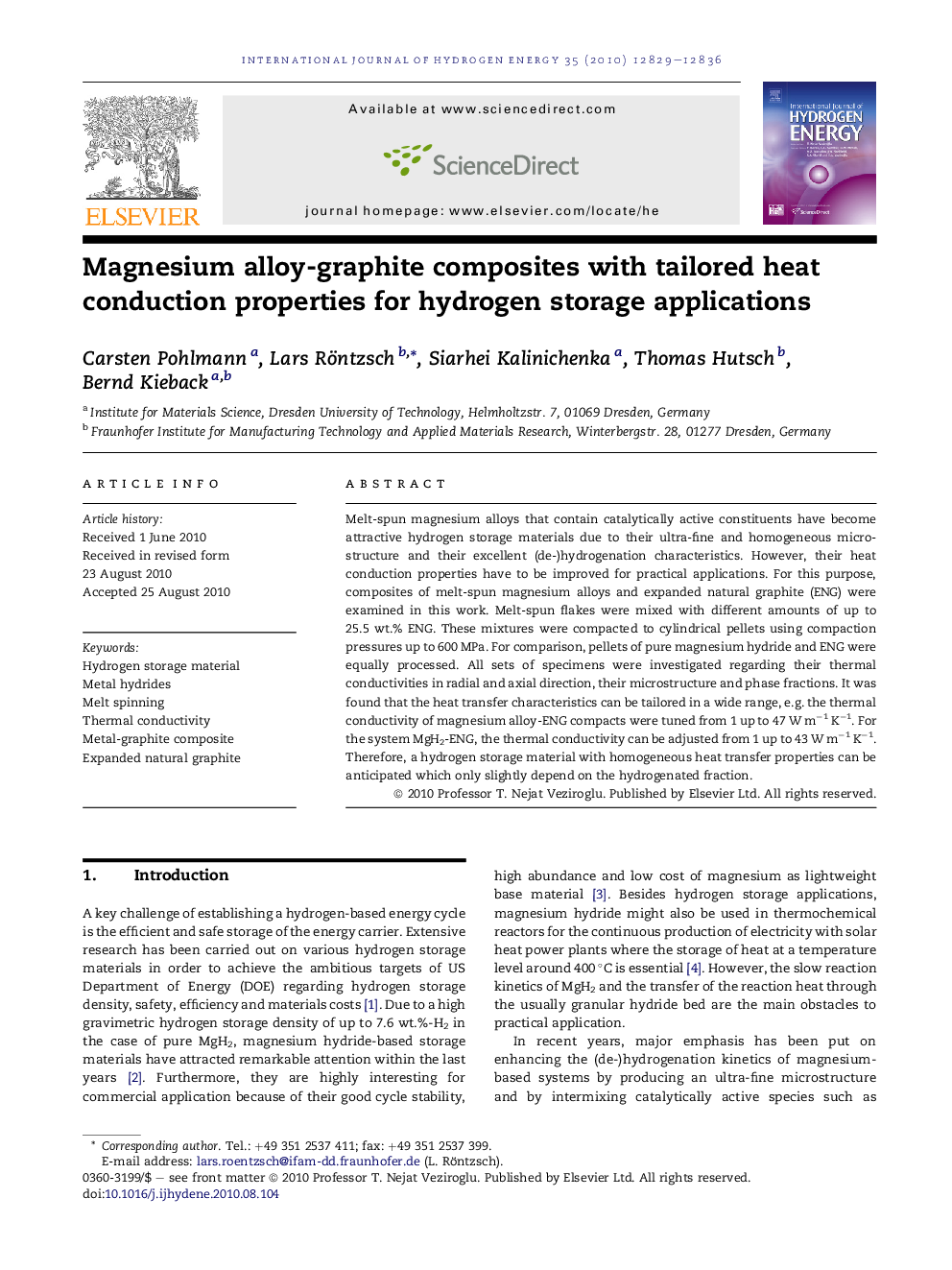| Article ID | Journal | Published Year | Pages | File Type |
|---|---|---|---|---|
| 1279924 | International Journal of Hydrogen Energy | 2010 | 8 Pages |
Melt-spun magnesium alloys that contain catalytically active constituents have become attractive hydrogen storage materials due to their ultra-fine and homogeneous microstructure and their excellent (de-)hydrogenation characteristics. However, their heat conduction properties have to be improved for practical applications. For this purpose, composites of melt-spun magnesium alloys and expanded natural graphite (ENG) were examined in this work. Melt-spun flakes were mixed with different amounts of up to 25.5 wt.% ENG. These mixtures were compacted to cylindrical pellets using compaction pressures up to 600 MPa. For comparison, pellets of pure magnesium hydride and ENG were equally processed. All sets of specimens were investigated regarding their thermal conductivities in radial and axial direction, their microstructure and phase fractions. It was found that the heat transfer characteristics can be tailored in a wide range, e.g. the thermal conductivity of magnesium alloy-ENG compacts were tuned from 1 up to 47 W m−1 K−1. For the system MgH2-ENG, the thermal conductivity can be adjusted from 1 up to 43 W m−1 K−1. Therefore, a hydrogen storage material with homogeneous heat transfer properties can be anticipated which only slightly depend on the hydrogenated fraction.
